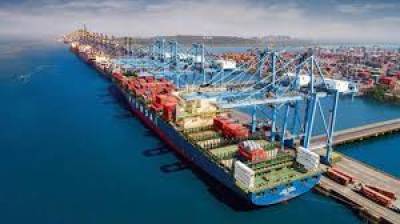MUMBAI, 4 June 2025: India’s agricultural trade policy has undergone significant evolution in the last two decades. As one of the world’s largest producers of food grains, spices, dairy, and horticultural products, India plays a crucial role in the global food supply chain.
The country’s engagement with major economies like the United States, United Kingdom, European Union, Australia, and ASEAN nations has become increasingly strategic, balancing food security, market access, sustainability, and farmer welfare. Recent developments highlight the shifting landscape of India’s agri-trade diplomacy and how it is reshaping partnerships worldwide.
India–US Agri-Trade: Between Access and Standards
The agri-trade relationship between India and the United States is defined by both opportunity and friction. The US has consistently pushed India to open up markets for high-value agricultural products such as apples, almonds, dairy, and poultry. In return, India seeks greater access for its basmati rice, spices, mangoes, and organic products.
However, sanitary and phytosanitary (SPS) standards, intellectual property issues related to seeds, and concerns over genetically modified (GM) crops often pose barriers. Despite these challenges, recent bilateral trade talks have aimed to resolve specific disputes and ease regulatory bottlenecks, as both nations acknowledge the importance of diversifying their agricultural supply chains in the post-pandemic global economy.
UK–India Agri Trade and FTA Progress
India and the United Kingdom have been negotiating a Free Trade Agreement (FTA) that includes a substantial agricultural component. The UK is interested in sourcing more tea, rice, spices, and processed food from India, while pushing for access for its whisky, dairy, pork, and premium food products.
One of the critical sticking points has been India’s tariff and non-tariff barriers on dairy and meat products, driven by both public sentiment and food safety concerns. However, both sides have made progress, with recent dialogues focusing on mutual recognition of food safety standards, sustainable agriculture, and investment in cold chain logistics.
The proposed FTA could significantly boost India’s exports to the UK, especially for organic and GI-tagged products, while allowing British firms to expand in India’s food retail and agri-tech sectors.
EU, Australia, and Global Negotiations
With the European Union, India’s agri-trade policy faces challenges due to stringent EU regulations on pesticides, sustainability, and certification standards. However, India’s olive oil, wine, pulses, and organic exports are growing steadily. Discussions around the EU-India FTA, which resumed after a long gap, include proposals for improving market access and resolving technical barriers.
Meanwhile, India’s FTA with Australia, signed in 2022, has opened up significant export opportunities for Indian spices, rice, and marine products, while reducing tariffs on Australian lentils, wool, and wines. This trade complementarity is seen as a model for India’s future South-South cooperation in agriculture with countries like Brazil, South Africa, and Vietnam.
Strategic Shifts: From Protectionism to Market Access
Historically, India’s agri-trade policy leaned toward protectionism—focused on shielding domestic farmers from global price fluctuations and import surges. But over time, the policy has shifted toward strategic liberalization. Initiatives like Agri Export Policy 2018, ONE DISTRICT ONE PRODUCT (ODOP), and the setting up of agri-export clusters reflect a growing ambition to double agri-exports, which currently stand at $50 billion annually.
India is also diversifying export destinations beyond the US and EU, targeting Middle East, ASEAN, and Africa for cereals, dairy, and horticultural produce. This shift is further backed by the government’s push for digital agriculture, sustainable practices, and traceability systems to meet international standards.
Trade Barriers and Challenges
Despite progress, India’s agri-trade is still constrained by high tariffs, unpredictable export bans, and complex compliance norms. For instance, sudden export restrictions on wheat, onions, and rice—often driven by inflation concerns—create uncertainty among trading partners.
Additionally, India has faced multiple WTO disputes, including on sugar subsidies, minimum support prices (MSP), and input subsidies, especially with developed nations. These disputes often highlight the tension between trade liberalization and food sovereignty—a recurring theme in India’s global trade narrative.
The Road Ahead: Policy Coherence and Global Integration
India’s future in agri-trade depends on a balanced approach—ensuring domestic price stability and farmer welfare while tapping into high-value international markets. Key to this will be:
Finalizing trade deals with UK, EU, and Canada
Rationalizing export policies and tariffs
Building robust value chains for perishable and processed food
Enhancing infrastructure, logistics, and cold storage capacity
Promoting climate-resilient and organic farming for global acceptance
India’s active role in G20 agriculture working groups and South-South knowledge sharing platforms shows that the country is ready to shape—not just follow—global norms in agri-trade.
Conclusion
As global supply chains shift post-COVID and climate concerns dominate trade talks, India’s agri-trade policy is being recalibrated to align food security, farmer interests, and export ambitions. Partnerships with the US, UK, EU, and other global players are central to this transformation. With the right mix of diplomacy, infrastructure, and innovation, India can emerge as a sustainable agri-export powerhouse in the years ahead.
By: Jagdish Kumar
Image credit: knnindia.co.in




















